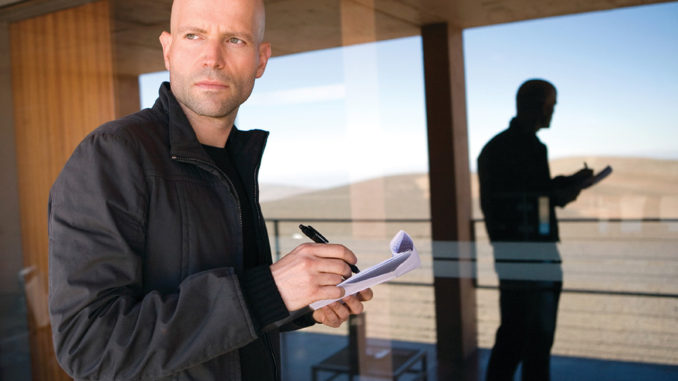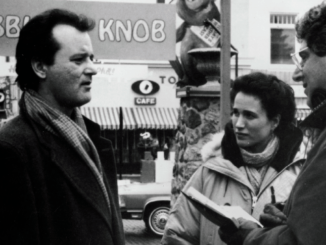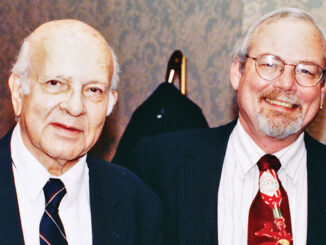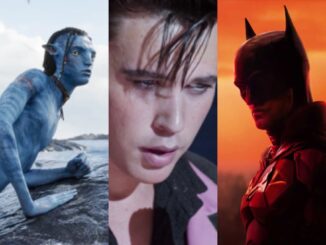
Bill Desowitz
The dirty little secret about Marc Forster directing Quantum of Solace––his first studio franchise film and his first James Bond outing––is that he was actually casting his eye for an action-adventure. However, the German-born director of such indie faves as The Kite Runner, Stranger Than Fiction, Finding Neverland and Monster’s Ball approached this like no other Bond film by turning inward to solve the mystery of 007’s emotional state and “the toll betrayal and revenge take on your soul.”
CineMontage: What was it like working with your two editors, Matt Chessé and Richard Pearson?
Marc Forster: Matt cuts all my films, so we’re very close and in sync, and Rick is a very new element. And we only had five weeks to cut a version of the preview, so I thought it would be good to bring in a second editor. I thought Rick was a very good team player on Bourne Supremacy and United 93. And it’s good for Matt and me to have Rick on board because he comes from a different perspective.
Matt and I come from the independent cinema; I had first cut on all my last pictures with complete creative control. And Rick comes more from the studio mentality and questions whether or not the audience is tracking––and I think as long we track, we’re fine. You can’t underestimate the audience. But it’s good for us to have Rick to bounce off of. We’re a good combination.
“Trust is the root of the story. And within that, all of these characters give him a different perspective of himself. And, ultimately, at the end of the movie, there is a little bit of self-awareness where he admits to [his vulnerability].” – Marc Foster
CM: You divided up the work evenly between them?
MF: Yes, I didn’t want to give all the action to Rick and all the emotional beats to Matt. I ultimately said to them that when we get to the tighter cut, I want to take the wheel and sign off with the three of us together so that it feels like one movie.
CM: I imagine even the action is not the typical kind you find in a Bond film.
MF: We’re basically dealing with all the elements: air, fire, water involving a plane, boat and car. Those are the big ones and then there are some smaller ones.
CM: Talk about the editorial process, which was obviously rushed because of the nature of this franchise.
MF: Usually when Matt and I work together, he doesn’t cut that much during shooting and we start together once I wrap shooting––and we have 14 weeks to edit very leisurely. On this one, I knew it would be too much footage and, again, we only had five weeks to cut the preview so once I wrapped the movie, we worked very hard and got out a first cut and then watched it. This wasn’t leisurely where we could watch and reflect and make our notes and then do a preview. I pretty much like to cut to the bone right away. And I don’t like assemblies. I have to watch it and work on a scene until I’m happy with it. Then I can go to the next scene.
“You can’t underestimate the audience. But it’s good for us to have Rick to bounce off of. We’re a good combination.” – Marc Foster
CM: Are you pleased with the way it turned out?
MF: I approached the film like an art film––that’s my background and I couldn’t approach it like a big franchise Bond film. What I always was drawn to were these conspiracy thrillers from the ‘70s like The Parallax View, where they don’t spoon-feed much. Yes, the audience has to track with Bond and not be too confused, but in the meantime, we don’t have to answer everything. I think raising questions and having the audience participate is interesting.
CM: Tell me about this first-time emotional journey for Bond and working with Daniel Craig. This is what attracted you to this film in the first place.
MF: It’s interesting in that you have someone who is an assassin who has lost someone and how this changes his perspective on killing. What does that really mean? One of the locations I chose is the desert. He is lonely out there in this desolate place and doesn’t know who he is. He’s a mystery to the audience but is just as much a mystery to himself.
What I tried to structure is using the other characters to help him learn more about himself. There is M and the other two women [Camille and Agent Fields] and Mathis. Trust is the root of the story. And within that, all of these characters give him a different perspective of himself. And, ultimately, at the end of the movie, there is a little bit of self-awareness where he admits to [his vulnerability].
As Bond, Daniel Craig adds so much more humanity and vulnerability and makes it more interesting to watch–– because he is someone we can finally relate to.






